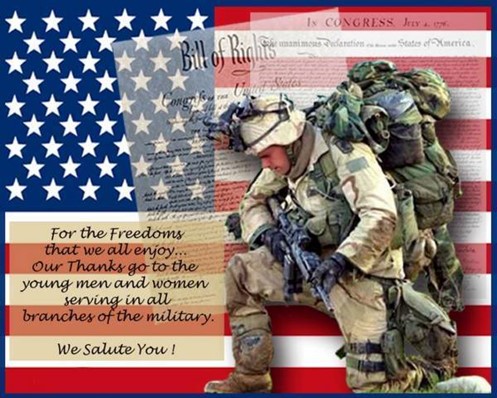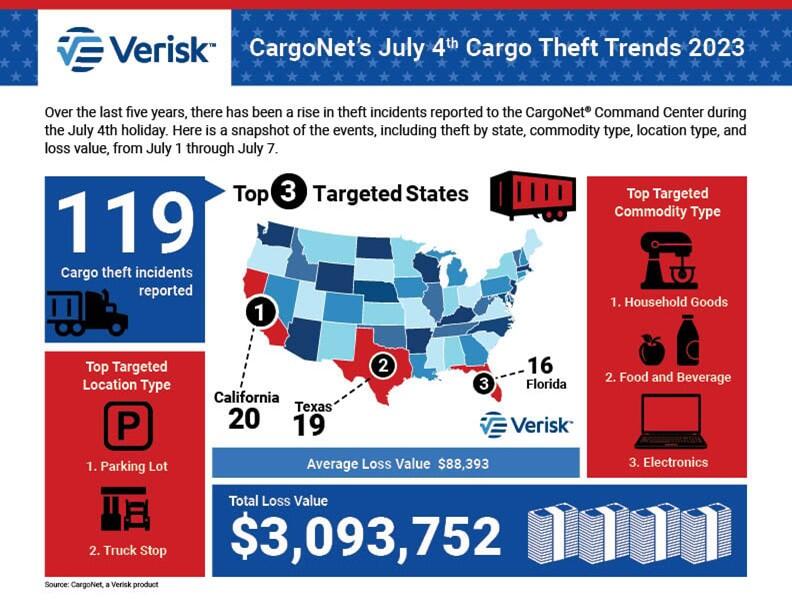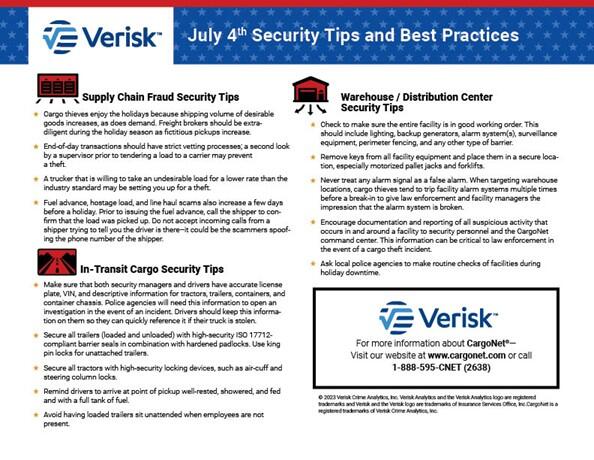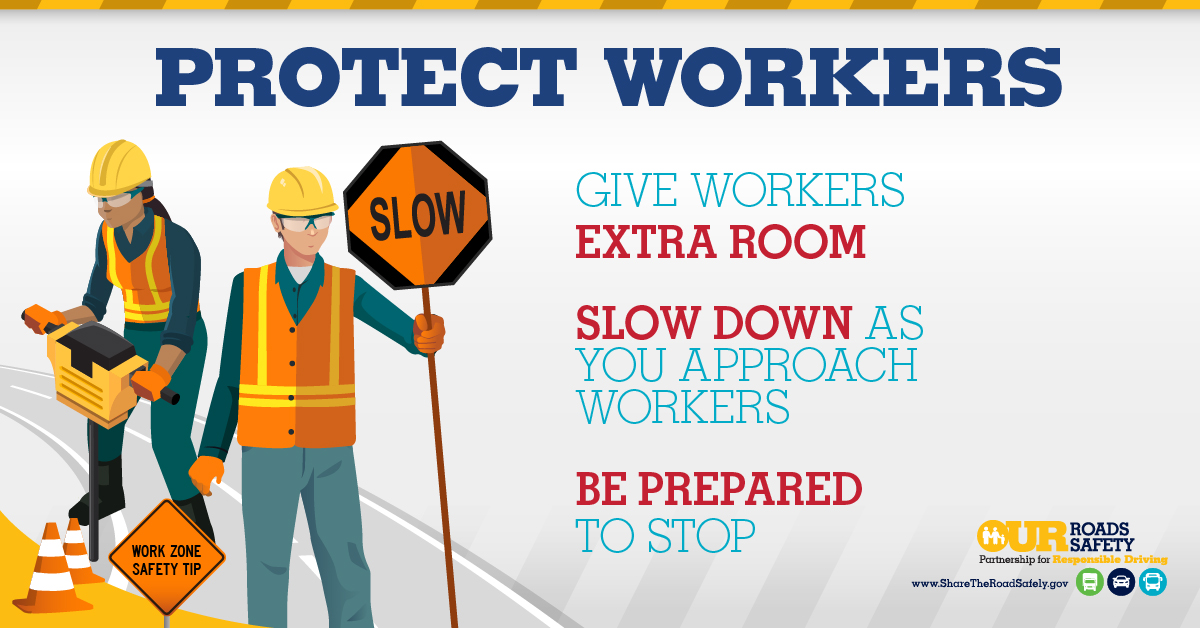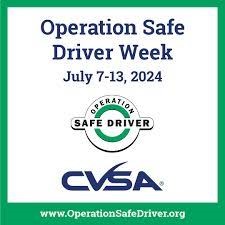During this Independence Day weekend, please take a moment to honor America and all that we are. Also, remember our military servicemen and women who are protecting our freedom across the globe and fighting for those who do not have the liberty our great country provides. Let us never forget those who have sacrificed before us to protect the United States and the values we hold dear.
Drive Sober or Get Pulled Over
To keep families safe this Independence Day, law enforcement agencies will have increased enforcement focused on impaired driving during the 4th of July holiday period.
Drinking and driving is a bad combination. The consequences are abundantly clear, yet people still make the poor decision to drive after drinking. Please be smart and make this 4th of July holiday a fun and memorable one.
If you are headed to 4th of July parties, designate a sober driver before heading out for the evening. If you are hosting a party, offer nonalcoholic drinks for designated sober drivers and monitor who is drinking. See someone leaving who has been drinking? Check how they are getting home. Offer to let them stay the night if a sober driver is not available to take them home. Driving with just a buzz does not cut it. With the rise in ride-share options, there really is no excuse for driving impaired.
The average cost of a DUI arrest is approximately $13,500, accounting for vehicle impound fees, fines, attorney fees, auto insurance hikes, and other penalties. Also, prescription drugs, over-the-counter medications and marijuana can all be impairing and land you a DUI, especially in combination with alcohol and/or other drugs.
Have you prepared your terminal facility for the 4th of July holiday?
It is not uncommon for thieves to target truck terminals and truck dealerships over the holidays. Thieves know that holiday weekends are a good opportunity for a successful theft, as facilities may be unattended. Take extra precautions to secure the trucks and valuable items at your facility.
If your units do not have anti-siphon devices or locking caps, instruct the drivers not to fill the units at the end of the day. Ensure that all security alarms and cameras are in working order. Walk the perimeter of the lot to check that security fencing is in good condition. Move units and all other material, such as pallets and tires, far enough away from the fence so they cannot be used to climb over it. Review your security lighting to make sure it is operational and adequate. Lighting can be obstructed by vehicles or trees, providing cover for thieves.
Consider blocking the entrance and exits to the lot so units cannot be stolen. Throughout the three-day weekend, assign management personnel to check the terminal randomly. Notify local law enforcement officials of your hours of operation over the holidays so they know when to expect activity at your location. Using a little prevention and common sense can deter a thief from striking your facility and disrupting your business!
Cargo Theft and 4th of July
Noteworthy thefts from previous July 4th holidays
- $2,000,000 of perfume from Hillsborough Township, New Jersey
- $439,895 in medical supplies from Davenport, Florida
- $352,000 of computer electronics from San Francisco, California
- $328,321 of toys from Trevor, Wisconsin
- $314,191 of computer electronics from Commerce, California
Help Your Fleet Drivers Avoid Rear-end Collisions
Most drivers would admit that when in a hurry, they sometimes follow the vehicle in front of them too closely. However, this is not a good idea. According to the National Highway Traffic Safety Administration, rear-end crashes are the most frequently occurring type of collision, accounting for approximately 29% of all accidents in the U.S.1
By failing to allow ample following distance, drivers rob themselves of time needed to react in an emergency, such as the car in front braking suddenly for an animal. The odds of a collision are even greater when tailgating behavior is combined with speeding or distracted driving.
A good rule of thumb to gauge following distance
Your fleet drivers can help to avoid rear-end crashes by slowing down, increasing the distance from the vehicle in front, or passing that vehicle if it is safe to do so. They need to know that tailgating is not an option.
A common tool used to determine proper following distance is the 3-second rule. To use it, choose a fixed point that is even with the car in front of you, such as a road sign or building. If you reach that fixed point before you can count to three, you are following too closely.
Prepare your drivers before they take the wheel
While most of your drivers are aware of the importance of maintaining proper following distance, it’s beneficial to remind them periodically of your safety-first policy with timely tips such as:
Use the 3-second rule. When the road is dry and straight, the 3-second rule is a simple way to give yourself enough time to react if a car or truck in front of you stops unexpectedly.
Be aware of the weather. If the road is wet, snowy, or icy, the 3-second rule won’t apply, and you’ll need more room to stop. You must also be prepared in case a vehicle in front of you skids.
Factor in visibility. If you are traveling dusk-to-dawn, that underscores the need for headlights that are clean and work properly, and for clean and clear windshields to minimize the impact of glare.
Know the vehicle you are driving. Does it have freshly adjusted brakes and ample tire tread? If not, you’ll need more space between your vehicle and the one in front of you to slow down.
Do not engage in Distracted driving activities. Distracted driving is any activity that diverts attention from driving, including talking or texting on your phone, eating and drinking, talking to people in your vehicle, fiddling with the stereo, entertainment, or navigation system—anything that takes your attention away from the task of safe driving.
Beware - We are now in the busiest time of year for Road Construction
Drivers need to be especially cautious of construction zones this summer. States are making a concentrated effort to raise the awareness of the dangers in these zones. Here are some safety tips you can share with your drivers regarding construction zones:
- SLOW DOWN and be alert when approaching a “construction zone.” Get into the correct lane well in advance. Where traffic is merging into a single lane, be cautious of other motorists racing to get ahead of slowing traffic.
- Get OFF of the phone…. even Hands Free phones are distracting your ability to safely operate your truck
- PAY ATTENTION to what those orange and black warning signs are telling you to do.
- BE ALERT for the actions of other drivers.
- PAY CLOSE ATTENTION to construction equipment and workers. You never know their next move, so be prepared to stop.
- WATCH SPEED LIMITS and don’t tailgate. Double your following distance. Rear-end collisions are the most common kind of construction zone accident.
- WATCH FOR CONSTRUCTION VEHICLES entering and exiting the road in or near the construction area, as they may enter and exit at a slower speed than other traffic.
- TURN YOUR HEADLIGHTS ON as you approach a work-zone, alerting both the construction workers and other traffic around you of your presence.
- GIVE CONSTRUCTION WORKERS A BRAKE
CVSA’s Operation Safe Driver Week Is Scheduled for July 7-13
The Commercial Vehicle Safety Alliance (CVSA) has announced July 7-13 as the dates for this year’s Operation Safe Driver Week, which is a safe-driving enforcement and outreach initiative aimed at improving driving behaviors through educational and traffic-enforcement strategies and driver interactions with law enforcement.
Throughout Operation Safe Driver Week, law enforcement personnel in Canada, Mexico and the U.S. will be on the lookout for commercial motor vehicle drivers and passenger vehicle drivers engaging in unsafe driving behaviors, such as speeding, distracted driving, following too closely, drunk, or drugged driving, etc. Drivers engaging in such behaviors will be pulled over by law enforcement and may be issued a warning or citation.
The focus area for this year’s Operation Safe Driver Week is reckless, careless, or dangerous driving. Any person who drives a vehicle in willful or wanton disregard for the safety of persons or property is driving recklessly. Careless/dangerous driving is defined as operating a vehicle without due care and attention or reasonable consideration for other motorists or people on the road.
CVSA’s Brake Safety Week Scheduled for Aug. 25-31
The Commercial Vehicle Safety Alliance (CVSA) has announced Aug. 25-31 dates for this year’s Brake Safety Week.
Brake Safety Week is a commercial motor vehicle and driver inspection and regulatory compliance enforcement initiative. It serves as both a brake-safety awareness and outreach opportunity and a brake-related inspection and violation data-collection project.
Inspection and Enforcement
CVSA-certified inspectors will conduct routine commercial motor vehicle inspections throughout the week, focusing on brake systems and components. Commercial motor vehicles found to have brake-related out-of-service violations will be removed from roadways until those violations are corrected.
For this year’s Brake Safety Week, inspectors will focus on the condition of brake linings and pads. Brake lining and pad issues may result in vehicle violations and affect a motor carrier’s safety rating.
In addition, some jurisdictions have performance-based brake testers (PBBTs) and will use them during Brake Safety Week. A PBBT is a machine that assesses a vehicle's braking performance.



